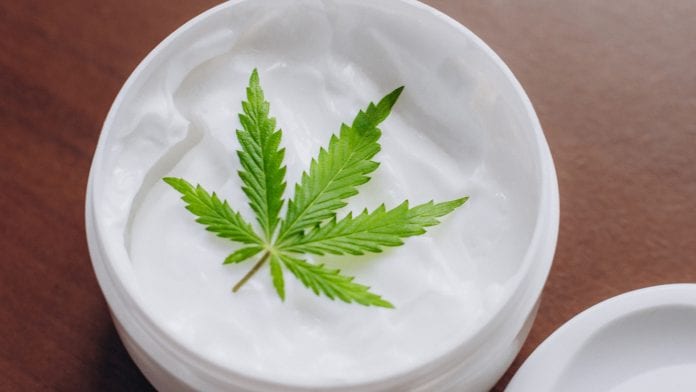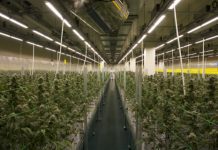
Cannabis and hemp are generally illegal across the Asia Pacific region however, places such as Thailand have recently legalised medical cannabis.
As attitudes changes towards the plant are changing, the different markets are set to grow in the region. Asia is a largely untapped CBD market and represents the next enormous market opportunity to benefit from the global secular trend towards the legalisation of cannabis.
Cannabis testing market in the Asia Pacific region
The Asia Pacific is considered to be the most attractive regional market for laboratory proficiency testing owing to the large base of manufacturers and research laboratories in the region. Also, the growing scientific base and research capabilities in several Asian countries; growth of the Asian pharmaceutical, food, and biologics markets; and the large base of CROs in the region are some of the other major factors driving market growth in the region.
The Asia Pacific Cannabis Testing Market to 2025 – Regional Analysis and Forecasts by Type; Services; End User and Country report has estimated that the Asia Pacific cannabis testing market is expected to reach $422.74m USD (~€384.88m) in 2025 from $132.38m in 2017.
The market is estimated to grow with a CAGR of 15.8% from 2018-2025.
The growth of the cannabis testing market is primarily attributed to the growing adoption of LIMS and cannabis legalisation for medical and recreational purpose in the region.
However, restricted use of cannabis is likely to pose a negative impact on the market growth. On the other hand, increased demand through domestic manufacturing is likely to have a positive impact on the growth of the Asia Pacific cannabis testing market in the coming years.
The growing advanced technology provide the best solutions to meet the current requirements and enables the system to be readily adapted based on the needs. The modern LIMS (Laboratory Information Management Systems) system are used to automatically registers and archives the results of laboratory work, to support people management and equipment and materials administration. Advancements including, macro level challenges to increase innovation, manage risk, improve governance, comply with regulatory requirements, and deliver quantifiable operational results, help pathology laboratories to meet the evolving demands of the modern pathology services in the region.
The increasing adoption of LIMS technique helps to improve the transparency to lab work status, reducing the costs and improved efficiency, providing flexibility to accommodate new requirements and also help to improve quality and compliance. Penetration of information technology and increasing demand for data management and standardisation is helping in growing the number of LIMS vendors in the market.
The increasing demand for the LIMS in Asian market and R&D spends in the counties like China and India is growing that proportionally upsurge the market growth in the region. Thus, due to the above advancements, the cannabis testing market is expected to grow at a rapid pace during the forecast period.
In 2017, the product segment held a largest market share of 73.7% of the cannabis testing market, by type. This segment is also expected to dominate the market in 2025 owing diverse portfolio of cannabis testing products to the healthcare industry for innovations in the technologies. Moreover, the same segment is also expected to witness the highest CAGR in the market accounting to 16.1% in 2018 to 2025 owing to increasing analytical services and medicinal cannabis services in testing cannabis.
The Asia Pacific cannabis testing market, based on services was segmented into potency testing, microbial analysis, residual solvent screening, heavy metal testing, pesticide screening, terpene profiling, and genetic testing. The potency testing segment is anticipated to grow at a CAGR of 16.9% during the forecast period.
The testing laboratory segment held a largest market share of 49.2% of the cannabis testing market, by end user. This segment is anticipated to grow at a CAGR of 16.3% during the forecast period.
CBD skincare market
Some Asia Pacific countries sch as China allow for CBD products to be used, including CBD skincare. The CBD category alone is estimated to potentially be worth up to $15 billion in China by 2024.
The global CBD skin care market size, which includes the Asia Pacific regions, is expected to reach $1.7bn by 2025, according to a report by Grand View Research, Inc., expanding at a CAGR of 32.9% over the forecast period.
The healing properties of CBD ingredients are expected to encourage the manufacturers to develop products infused with these ingredients, thereby driving the market in the coming years.
Key suggestions from the report:
- The global CBD skin care market is expected to expand at a CAGR of 32.9% from 2019 to 2025, thereby reaching a value of $1.7 billion by 2025;
- North America led the market, accounting for a share of more than 40.0% in 2018, owing to high demand and legalisation of cannabis in US and Canada;
- Hemp based products generated a revenue of USD 147.0 million in 2018; and
- Some of the major players operating in the global market are Kiehl’s LLC; Cannuka LLC.; Elixinol Global Limited; Medical Marijuana Inc.; Endoca LL; Lord Jones; VERTLYBALM; Kapu Maku LLC; and Leef Organics.
CBD is considered safe and effective for all skin types but is particularly useful for people who struggle with sensitivity, inflammatory conditions, acne, and dryness related to skin. Owing to these strong inflammatory properties, CBD helps in skin’s natural healing process, lowering the life span of breakouts and eczema flare-ups. CBD also showcases potential antioxidant properties that can help in counteracting signs of aging. It can even help in reducing pain caused by inflammatory skin conditions.
According to the EU cosmetic ingredient database, hempseed oil also acts as a surfactant, cleanser, emollient, and conditioner agent. Hemp molecules are very minute, which further allows it to effectively penetrate the skin and provide effective results. Hemp based products held the largest share of 62.8% in 2018 on account of high fatty acid content of the product. Hemp infused products help in reducing the discomfort by soothing and rejuvenating dry and damaged skin. They also help in controlling aging problems, which is likely to drive the application of this source.
CBD based skin care oils led the market and accounted for a share of 40.9% in 2018. This product type has been gaining an increasing popularity in the personal care market. It is highly beneficial for acne, aging, and wrinkle prone skin conditions due to its anti-inflammatory properties. CBD oil also has antioxidant attributes, which help in reducing the visible signs of aging.
North America led the market in 2018 and is expected to be the fastest growing market in the coming years. Demand for CBD skin care products from North America is expected to remain high due to the presence of a large customer base and legalisation of marijuana in U.S. and Canada. Currently, about 33 states in U.S. and District of Colombia have legalised cannabis in U.S., thereby making it the largest market in the world. The legalisation and presence of prominent beauty care manufacturers are expected to contribute to the market growth over the next few years.


















I want to have more information about the Cannabis market, and dynamic trend.
thks